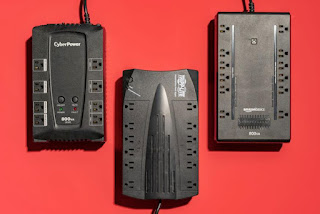A Beginner's Guide to Uninterruptible Power Supplies (UPS)
Uninterruptible Power Supplies (UPS) are crucial devices that serve as a safeguard against power interruptions, ensuring the protection of our electronic devices and critical data. Whether you're a homeowner, a small business owner, or an IT professional, having a solid understanding of UPS systems can prove invaluable in maintaining productivity and preventing potential losses. In this comprehensive guide, we will delve into the essential aspects of uninterruptible power supplies.
Understanding Uninterruptible Power Supplies (UPS)
What is a UPS and How Does it Work?
At its core, a UPS is an electrical apparatus that acts as a fail-safe when the primary power source experiences disruptions or failures. It bridges the gap between the main power outlet and your devices, offering a seamless transition without any disruptions. Think of it as a protective shield that keeps your devices running during power outages, allowing you to save your work and power down your systems properly.
Different Types of UPS Systems
Offline/Standby UPS: This type of UPS remains dormant until a power interruption is detected. It then swiftly switches to battery power to provide an uninterrupted flow of electricity to connected devices.
Line-Interactive UPS: This system offers a step further in protection. It adjusts minor voltage fluctuations without instantly resorting to battery mode, thus providing enhanced defense against voltage surges and drops.
Online/Double-Conversion UPS: The devices connected to this UPS are continually powered by its inverter, resulting in the highest quality power supply and protection against a wide spectrum of power anomalies.
The Advantages of Using a UPS
- Safeguard Against Power Surges: UPS systems regulate voltage, preventing power surges that could potentially damage sensitive electronics.
- Seamless Workflow Continuity: During power outages, UPS systems provide enough time for you to save your work and properly shut down devices, ensuring a smooth transition.
- Prevention of Data Loss: Sudden power cuts can lead to data corruption. UPS systems ensure data integrity by maintaining a stable power supply.
- Extended Equipment Lifespan: By delivering consistent power, UPS systems contribute to the prolonged lifespan of your electronic equipment.
Selecting the Ideal UPS for Your Needs
Assess Your Power Requirements
Start by evaluating the energy demands of your devices. Calculate the total wattage and opt for a UPS with an appropriate power rating to accommodate your load.
Consider Outlet Types
Different devices come with different plug types. Make sure the UPS you choose has the appropriate outlets to support your equipment.
Battery Runtime
The duration for which your devices can run on battery power is determined by battery runtime. Factor this in when choosing a UPS, particularly if you require prolonged backup times.
Scalability
If you anticipate adding more devices in the future, opt for a UPS that facilitates easy scalability.
Setting Up Your UPS
- Strategic Placement: Position your UPS in a cool, dry, and well-ventilated area to prevent overheating.
- Device Connection: Plug your devices into the designated UPS outlets, ensuring not to overload the system.
- Initial Charging: Upon initial setup, allow your UPS to charge for the recommended duration before depending on it for backup power.
Maintaining Your UPS
- Regularly conduct tests on your UPS to verify its proper functioning.
- Adhere to the manufacturer's guidelines for battery maintenance and replacement.
- Keep the UPS clean and free from dust to prevent potential overheating issues.
In Conclusion
In a modern era where electronic devices are integral to daily life, protecting them from power disturbances is of paramount importance. Uninterruptible Power Supplies stand as a reliable defense against data loss, a promoter of equipment longevity, and a guardian of uninterrupted workflows. By grasping the various types of UPS systems available and selecting the one best suited to your needs, you can ensure seamless productivity even when facing unexpected power outages.
Frequently Asked Questions (FAQs)
1. Can I utilize a UPS for all my electronic devices?
Absolutely, a UPS can effectively power a wide array of electronic devices, ranging from computers and routers to gaming consoles and home entertainment systems.
2. How long will a UPS sustain my devices during an outage?
The duration for which a UPS can power your devices during an outage varies based on the model and load. Some UPS systems provide power for a few minutes, while others offer several hours of backup.
3. Can I replace UPS batteries by myself?
Certainly, most UPS systems feature user-replaceable batteries. Refer to the manufacturer's instructions for proper battery replacement procedures.
4. Will a UPS shield my devices from lightning strikes?
While a UPS provides a certain level of surge protection, it's advisable to implement additional surge protection devices, especially in regions prone to lightning strikes.
5. Can I plug a UPS into an extension cord or power strip?
For optimal performance, it's recommended to directly plug a UPS into a wall outlet to ensure proper grounding and prevent circuit overloads.

